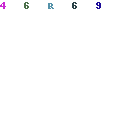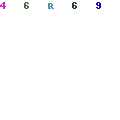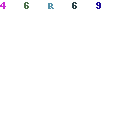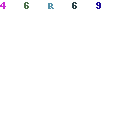SIUE students and faculty at St Louis Science Center
SIUE took science to the masses on “The National Chemistry Week – Day at the Science Center.” The American Chemical Society, a professional organization of about 160,000 chemists, every year gets Congress to declare National Chemistry Week.
The St. Louis section of ACS has featured the event at the St Louis Science Center for about 19 years. The events offers schools, universities and corporations a chance to interact with the public.
Mike Shaw, professor of chemistry, took six SIUE students to the event. Students involved included graduate students Brian Schutte, Kenneth Rodgers, Krishna Prasad Sharma Gautham and Hope Blake, along with undergraduate students Charlotte Jauch and Chris Felchlia.
Shaw and the students met Shaw’s collaborator, Dr. George Richter-Addo of Oklahoma University, at the Science Center.
“We went this year with the idea that we would use the event to do some outreach and to fulfill some of the objectives of our NSF [National Science Foundation] funding,” said Shaw. “We highlighted three grants.”
One of the grants that Shaw highlighted is shared with his collaborator. It is a three year grant. The SIUE portion is $249,000. The grant allows Shaw to hire graduate students to work in the lab during the summer and helps pay for teaching assistantships.
“It funds the equipment and trips and chemicals we have to buy. There is some travel money in there so I can send my students and results on trips—like to the American Chemical Society Meeting.”
The posters on the grants set up the backdrop for the active portion of the presentation. The students and Shaw used an experiment to get people of all ages to view their work.
Using ‘the blue bottle’ experiment, they demonstrated how instruments can show scientists what the human eye is not capable of seeing. The technique uses a clear liquid that is shaken. When shaken, it turns blue. A piece of the equipment, a modular spectrometer from the SIUE lab, was used with a light source and fiber optic dip probe. The probe is dipped into the liquid and the results are shown on a computer. The computer display shows that the color changes for several minutes before the human eye can detect the slightest change.
“The point of the whole thing was to illustrate how instruments tell you more about the world than you can just see with your eyes alone,” Shaw explained.
Shaw hopes to continue this type of outreach. The students that went with Shaw were effective in their outreach with the people coming through the Science Center, according to Shaw. One student who plans on teaching science at the elementary level was especially effective at reaching the younger children.
The demonstration by SIUE filled a niche. Some of the other displays used typical interactive science projects, such as slime production, to engage the audience.
“All the other demonstrations were targeted to children of 5-12 years old. Ours seemed to be the only one that was geared toward teenagers and adults—but it also engaged the younger children,” Shaw stated. “Taking actual research equipment and showing how we use it was something the adults really appreciated.”

Members of the SIUE presentation at the St. Louis Science Center (left to right back row: Brian Schutte, Chris Felchlia; front row: Kenneth Rodgers, Krishna Prasad Sharma Gautham, Charlotte Jauch, Hope Blake, Dr. George Richter-Addo and Mike Shaw.
Filed Under: Chemistry
















This looks like a great effort on the part of the members of the SIUE presentation! I recently attended a presentation on best practices for recruiting, retaining, and ensuring the success of students in the sciences, and the type of program you have done here is an important component of taking chemistry to the public. Well done!